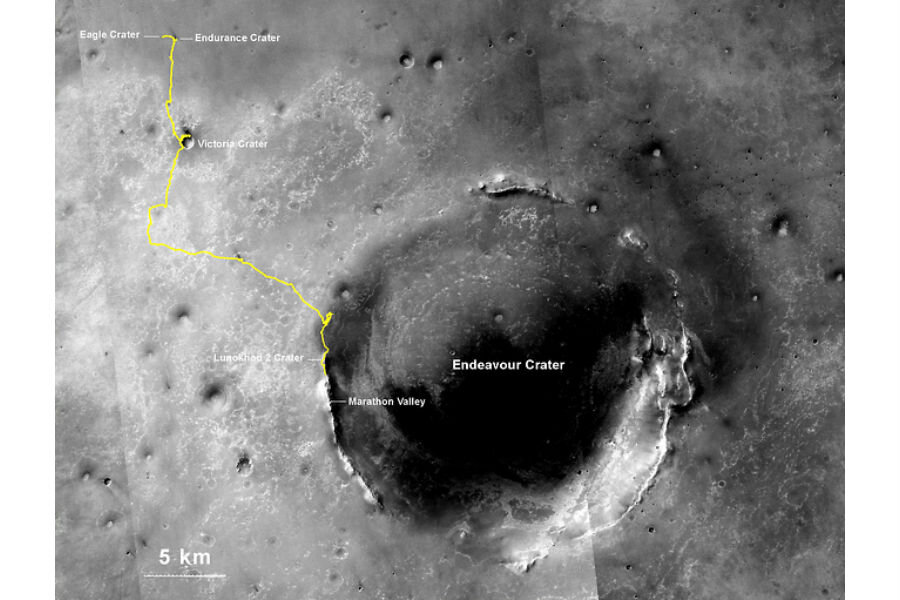Rover distance record: Mars rover Opportunity breaks space exploration record
How many miles must a rover traverse to break a solar-system record? Apparently, just 25.01 miles.
The Mars rover Opportunity broke the record for the longest distance traveled off-Earth on Sunday with a 157-foot jaunt along the western rim of Endeavour Crater, National Aeronautic and Space Administration officials said Monday.
Earth-bound travelers accustomed to driving farther than that on a daily basis might not be overly impressed, but breaking the 25-mile mark on the odometer is a major feat for Opportunity.
“This is so remarkable considering Opportunity was intended to drive about one kilometer [less than a mile] and was never designed for distance,” John Callas, project manager for the Mars Exploration Rover Mission, said in a statement Monday. “But what is really important is not how many miles the rover has racked up, but how much exploration and discovery we have accomplished over that distance.”
Opportunity and its twin vehicle, Spirit, landed on Mars in 2004 with the express mission of exploring the environment for evidence that the red planet might have once had enough water to host life. The 384-pound rovers were equipped with the same set of scientific instruments designed to analyze the planet’s geology.
Spirit’s communications systems petered out in 2010 with about 4.8 miles on the odometer. The rover Curiosity, which landed on Mars in 2012, has just 5.3 miles or so under its belt to date.
Opportunity’s travels this month shattered – well, nudged anyway – the previous off-Earth distance record, which was set by the Soviet Union’s Lunokhod 2 rover in 1973. The Lunokhod 2 rover racked up 24.2 miles on the moon in less than five months. In a nod to that mission, NASA’s rover team named a crater on the outer slope of Endeavour’s rim Lunokhod 2.
The rover team has set its sights on 26.2 miles for Opportunity’s next milestone, and it has dubbed the terrain it expects the rover to explore at that point “Marathon Valley.”
NASA hopes to send a human mission to Mars in the 2030s. If that day ever comes, NASA will need to find a way to safely land payloads much larger than before. That’s a complicated task given the red planet’s ultrathin atmosphere and minimal surface gravity. Engineers at NASA’s Jet Propulsion Laboratory in Pasadena, Calif., have been working on a massive inflatable parachute that resembles a flying saucer to help deliver larger pieces of equipment. Project managers successfully tested the parachute off the coast of Kauai in the Hawaiian Islands on June 28.






